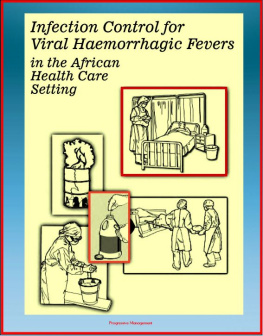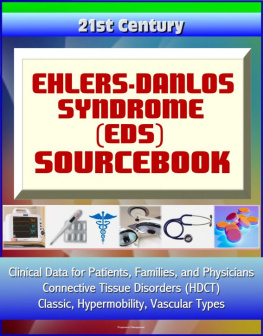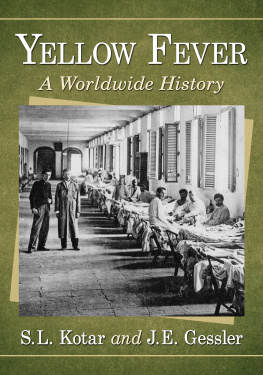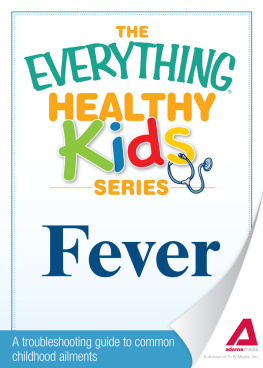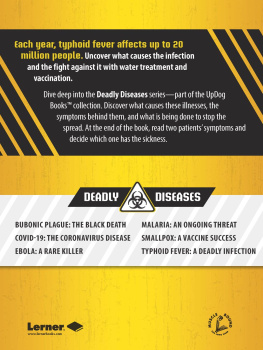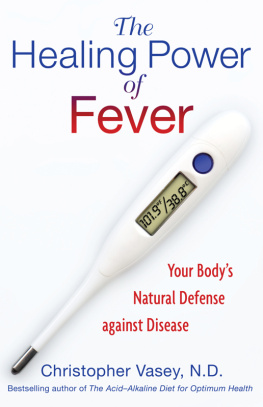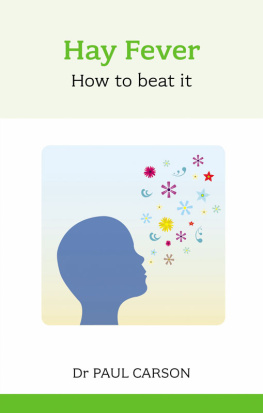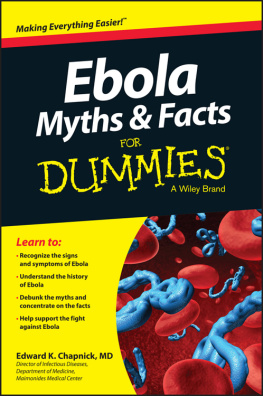Ebola Guide: Infection Control for ViralHemorrhagic Fevers (VHFs) in the African Health Care Setting(including Lassa Fever, Rift Valley Fever, Ebola, Marburg, YellowFever) - Isolation Precautions
Centers for Disease Control (CDC), WorldHealth Organization (WHO)
Smashwords Edition
Copyright 2012 Progressive Management
Questions? Suggestions? Comments? Concerns?Please contact the publisher directly at
Remember, the book retailer can't answer yourquestions, but we can!
* * * * * * * * * * *
Smashwords Edition, License Notes
This ebook is licensed for your personalenjoyment only. This ebook may not be re-sold or given away toother people. If you would like to share this book with anotherperson, please purchase an additional copy for each person youshare it with. If you're reading this book and did not purchase it,or it was not purchased for your use only, then you should returnto Smashwords.com and purchase your own copy. Thank you forrespecting the hard work of this author.
* * * * * * * * * * *
This is a privately authored news service andeducational publication of Progressive Management. Our publicationssynthesize official government information with original material -they are not produced by the federal government. They are designedto provide a convenient user-friendly reference work to uniformlypresent authoritative knowledge that can be rapidly read, reviewedor searched. Vast archives of important data that might otherwiseremain inaccessible are available for instant review no matterwhere you are. This e-book format makes a great reference work andeducational tool. There is no other reference book that is asconvenient, comprehensive, thoroughly researched, and portable -everything you need to know, from renowned experts you trust. Forover a quarter of a century, our news, educational, technical,scientific, and medical publications have made unique and valuablereferences accessible to all people. Our e-books put knowledge atyour fingertips, and an expert in your pocket!

* * * * * * * * * * * *
Infection Control for Viral HaemorrhagicFevers (VHFs)
* * * * * * * * * * * *
CONTENTS
* * * * * * * * * * * *
* * * * * * * * * * * *
Infection Control for Viral HaemorrhagicFevers in the African Health Care Setting
This manual was prepared by:
Centers for Disease Control andPrevention: National Center for Infectious Diseases, Divisionof Viral and Rickettsial Diseases, Special Pathogens Branch, WHOCollaborating Centre for Viral Haemorrhagic Fevers
and
World Health Organization: Division ofEmerging and Other Communicable Diseases -Surveillance andControl
C. J. Peters, M.D., Chief, SpecialPathogens Branch * Division of Viral and Rickettsial Diseases *National Center for Infectious Diseases
Centers for Disease Control andPrevention
Guenael Rodier, M.D., Chief,Epidemiological Surveillance and Epidemic Response * Division ofEmerging and Other Communicable Diseases
World Health Organization
Developed and written by:
Ethleen Lloyd, M.S., C.H.E.S., HealthCommunication Specialist, Special Pathogens Branch (CDC)
Helen Perry, M.A., Educational DesignSpecialist, Special Pathogens Branch (CDC)
Introduction
Viral Haemorrhagic Fevers: An Overview
In Africa, viral haemorrhagic fevers (VHFs)include Lassa fever, Rift Valley fever, Marburg and Ebolahaemorrhagic fevers, Crimean-Congo haemorrhagic fever (CCHF) andyellow fever. Humans initially contract an infection with ahaemorrhagic fever virus through exposure to rodents or insects(for Ebola and Marburg VHFs, the natural reservoir is unknown).Person-to-person transmission of Lassa, Ebola, Marburg and CCHFviruses can occur through direct contact with VHF-infectedmaterial.
Typically, during the course of a VHF, theblood vessels and many organ systems are damaged. VHFs are oftenaccompanied by bleeding, reflecting the widespread presence of thevirus throughout the patient's body. As a result, the blood, urine,vomitus, pus, stool, semen and saliva from the VHF patient areinfectious. This is why VHFs pose a serious risk to caregivers inthe health care setting and in the community.
The transmission risk of VHFs in the healthcare and laboratory setting is well documented. During the 1995Ebola haemorrhagic fever outbreak in Kikwit (former Zaire, and nowthe Democratic Republic of the Congo), one fourth of the cases werein health care workers with a history of recent patient care.1After barrier nursing practices (such as wearing protectiveclothing) were implemented, the risk of transmission was reduced.No new cases were reported among health care workers who used thesepractices. (Fig.1)
1 Khan AS et al. The Reemergence of EbolaHemorrhagic Fever, journal of Infectious Diseases, in press,1998.
How VHF Is Transmitted in the Health CareSetting
The virus enters the health facility in thebody fluids of a VHF patient >
All health care staff, laboratory staff,cleaning staff, other patients and visitors to the health facilityare at risk for exposure to VHF. >
The virus is transmitted during direct,unprotected contact with a VHF patient OR with a deceased VHFpatient. >
The virus is also transmitted duringunprotected contact with VHF infectious body fluids
OR
contaminated medical equipment andsupplies
OR
as a result of an accidental needlestick oraccidental exposure to infectious body fluids. >
The exposed person carries the virus back tothe community. Transmission continues if there is directperson-to-person contact OR any unprotected contact with infectiousbody fluids.
What Is in This Manual
This manual describes a system for using VHFIsolation Precautions to reduce the risk of transmission of VHF inthe health care setting. The VHF Isolation Precautions described inthe manual make use of common low-cost supplies, such as householdbleach, water, cotton cloth, and plastic sheeting. Although theinformation and recommendations are intended for health facilitiesin rural areas in the developing world, they are appropriate forany health facility with limited resources.
Who the Manual Is For
The manual is intended primarily for healthofficers who implement infection control in the health caresetting, and for:
Health facility administrators
Hospital outbreak coordinators
Chief medical officers
Chief nursing officers
Medical and nursing staff
Medical and nursing educators
Public health officers and programadministrators.
Objectives
The information in this manual will helphealth facility staff to:
1. Understand what VHF Isolation Precautionsare and how to use them to prevent secondary transmission of VHF inthe health facility.
2. Know when to begin using VHF IsolationPrecautions in the health care setting.
3. Apply VHF Isolation Precautions in alarge-scale outbreak. (When a VHF occurs, initially as many as 10cases may appear at the same time in the health facility.)
4. Make advance preparations for implementingVHF Isolation Precautions.
5. Identify practical, low-cost solutionswhen recommended supplies for VHF Isolation Precautions are notavailable or are in limited supply.
6. Stimulate creative thinking aboutimplementing VHF Isolation Precautions in an emergencysituation.
7. Know how to mobilize community resourcesand conduct community education.
How to Use the Manual
This manual can be used as a rapid referencewhen one or two cases of a VHF appear in a health facility and noprevious preparations for VHF Isolation Precautions have been done.Administrators or hospital outbreak coordinators can use theinformation and instructions to set up an isolation area quicklyand make adaptations from local materials so that an effectivesystem of infection control can be implemented as soon aspossible.
Next page
